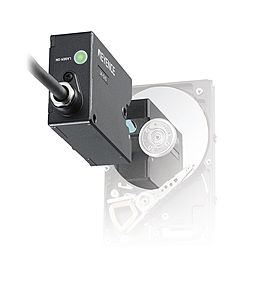Jun 4 2010
Keyence has introduced a new series of laser displacement sensors called the LK-G Series that provide stable and accurate measurements of a variety of materials and surfaces. The LK-G sensors incorporate a unique measurement technology and provide superior measurement performance, unlike standard charge-coupled device (CCD) displacement sensors.
 LK-G laser displacement sensor
LK-G laser displacement sensor
The LK-G sensors offer enhanced accuracy of ±0.03% and a high resolution of 0.0004 Mil (0.01 µm). The sensors offer a sampling speed of 50 kHz. The LK-G sensors offer good stability with vibrating, rotating and fast moving targets. The sensors can also be used for inline applications where data averaging is needed.
The LK-G sensors utilize a linearized charge-coupled device that positions the light inside a pixel to obtain precise measurements. This accuracy is twice as high compared to standard sensors. Moreover, the patented LK-G design offers superior sensitivity and speed, which are 10 times higher and 25 times faster, respectively. The linearized charge-coupled device was specifically made for sensor applications.
In addition to the LK-G Series, Keyence has also designed a novel light-receiving device to concentrate the reflected illumination onto the linearized charge-coupled device. An Ernostar lens system can significantly lessen spot distortion that is normally caused by disturbances, and a stiff die-cast body decreases variations caused by temperature changes.
The ABLE (Active Balanced Laser control Engine) technology from Keyence can detect target surface conditions and alters the intensity of laser illumination accordingly. This technique offers a 13,000 times broader range of light intensity. With the Active Balanced Laser control Engine, the performance output of the LK-G sensors is not affected by surface coatings, color or reflections.
The Active Balanced Laser control Engine offers superior measurement performance and can be used for metal, mirror-surfaced and black-rubber materials. Keyence has developed an RPD (real peak detection) algorithm that cancels the diffused illumination that is caused by laser beam reflections within the transparent materials.
The real peak detection enables users to obtain precise measurements on transparent materials such as PCB, LCD cover glass, plastic and a variety of glass materials.